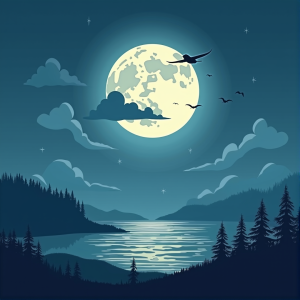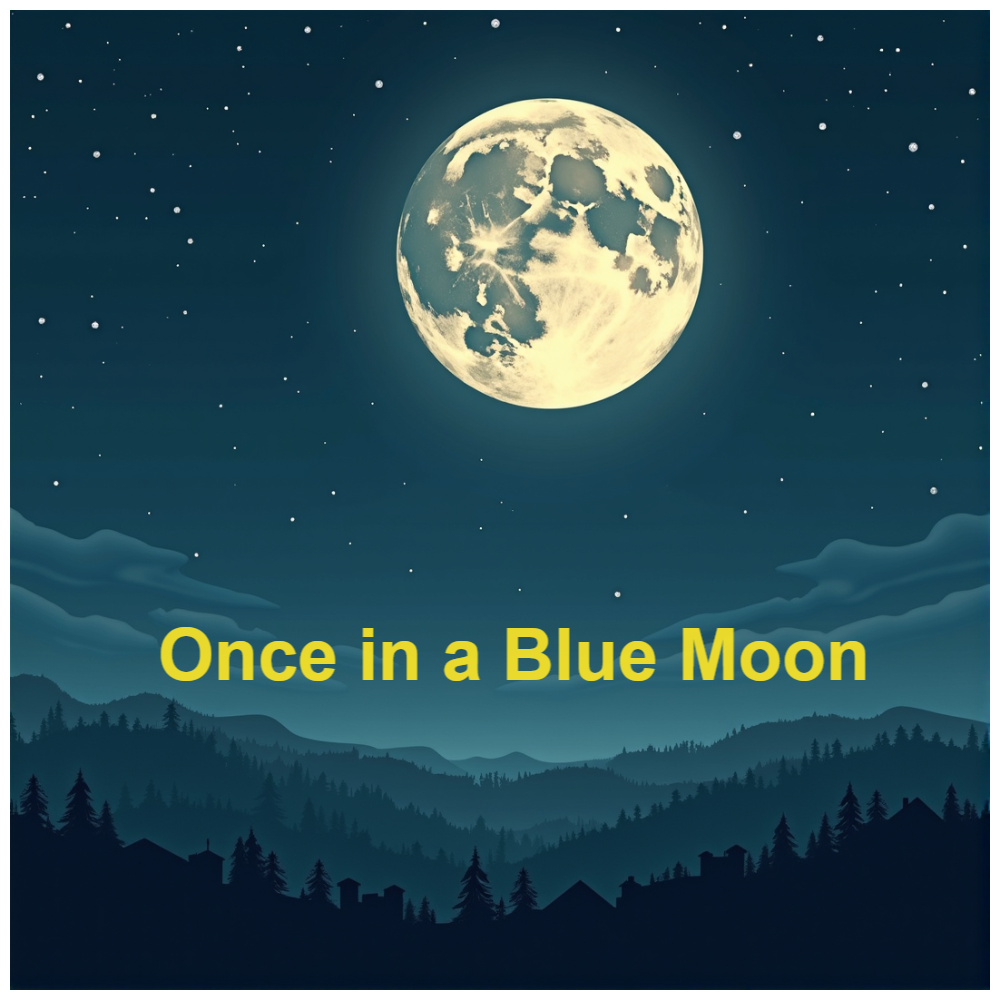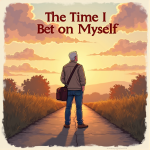Some sayings are so familiar that we hardly think about them. Once in a blue moon is one of those — a casual way of saying something is rare, unusual, or almost never happens. But as I sat at my desk last week, tinkering with a few email headlines, I suddenly wondered: what is a blue moon anyway? And has anyone ever actually seen one?
Naturally, I couldn’t resist digging in.
🔭 What Is a Blue Moon?
 Despite the poetic name, a blue moon doesn’t usually look blue. It’s a term from astronomy, and it refers to an extra full moon in a calendar period. Usually, we get one full moon per month — 12 per year. But every 2–3 years, there are 13 full moons in a year instead of 12. That “extra” moon is known as a blue moon.
Despite the poetic name, a blue moon doesn’t usually look blue. It’s a term from astronomy, and it refers to an extra full moon in a calendar period. Usually, we get one full moon per month — 12 per year. But every 2–3 years, there are 13 full moons in a year instead of 12. That “extra” moon is known as a blue moon.
There are two definitions that have emerged over time:
-
Seasonal Definition: The third full moon in a season that has four full moons (rather than the usual three).
-
Calendar Definition: The second full moon in a single calendar month.
It’s the second one that most people know today — and it became popular not through astronomy books, but a misinterpretation printed in a 1946 Sky & Telescope magazine article. Funny how mistakes stick.
🌕 Why “Blue”?
The moon can actually appear blue — but only under rare conditions, like after a volcanic eruption or a major wildfire when particles in the atmosphere scatter red light. One example was in 1883, when Krakatoa erupted. People all over the world reported seeing a literally blue-hued moon.
But that’s nothing to do with the phrase. “Blue” here just means “rare” — and no one’s entirely sure how that colour got associated with rarity. There’s even an old English expression, “He’d argue the moon was blue,” meaning someone who’ll argue something absurd.
Over time, “blue moon” simply came to mean a rare event, and “once in a blue moon” — something that hardly ever happens.
🧠 When to Use It
I’ve found it’s a useful phrase for online marketing too.
-
A once-in-a-blue-moon offer (just don’t overuse that tactic)
-
Blogging consistency — not something to do once in a blue moon!
-
Checking your analytics properly — once in a blue moon isn’t enough!
Language is powerful, especially when it carries a bit of story with it. When you use phrases like these, you’re adding colour and rhythm to your writing, while giving readers something familiar to hang onto.
And that’s one small way to stand out — especially in a world of cookie-cutter content.
🧾 Closing Thought
So the next time you hear once in a blue moon, you’ll know it’s not about rare lunar hues — it’s about time, rhythm, and the curious way humans label the world around them.
It’s a phrase rooted in astronomy, cemented by a printing mistake, and now used by marketers like me to add a touch of charm to our writing.
Not bad for five little words.



